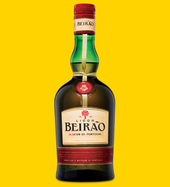Liqueur


A liqueur (, they are typically heavily sweetened and un-aged beyond a resting period during production, when necessary, for their flavors to mingle.
Liqueurs are historical descendants of
Etymology
The French word liqueur is derived from the Latin liquifacere, which means "to dissolve".[1][2]
In some parts of the United States and Canada, liqueurs may be referred to as cordials, or schnapps.[3][4] This can cause confusion as in the United Kingdom a cordial would refer to a non-alcoholic concentrated fruit syrup, typically diluted to taste and consumed as a non-carbonated soft drink.[5] Schnapps, on the other hand, can refer to any distilled beverage in Germany and aquavit in Scandinavian countries.[6]
Legal definitions
In the United States and Canada, where spirits are often called "liquor", there is often confusion discerning between liqueurs and
Canada
Under the Food and Drug Regulations (C.R.C., c. 870), liqueurs are produced from mixing alcohol with plant materials.[9] These materials include juices or extracts from fruits, flowers, leaves or other plant materials.[9] The extracts are obtained by soaking, filtering or softening the plant substances. A sweetening agent should be added in an amount that is at least 2.5 percent of the finished liqueur. The alcohol percentage shall be at least 23%.[9] It may also contain natural or artificial flavoring and color.[9]
European Union
The European Union directive on spirit drinks provides guidelines applicable to all liqueurs.[10] As such, a liqueur must
- contain a minimum of 15% alcohol by volume,
- contain at least between 70 and 100 grams of inverted sugar per liter,
- be created using neutral grain alcohol and/or distillate(s) of agricultural origin,
- be flavored with natural, or nature-identical, flavorings, and
- be labeled with the alcohol content and a list of any food colorings.
United States
The Alcohol and Tobacco Tax and Trade Bureau regulates liqueurs similarly to Canada. Liqueurs (and also cordials) are defined as products created by mixing or redistilling distilled spirits with fruit, plant products, natural flavors, extracts, or sweeteners. These additives must be added in an amount not less than 2.5% by weight of the final product.[11]
Preparation
Some liqueurs are prepared by
Anise and Rakı liqueurs have the property of turning from transparent to cloudy when added to water: the oil of anise remains in solution in the presence of a high concentration of alcohol, but coalesces when the alcohol concentration is reduced; this is known as the ouzo effect.[12]
Use
Cocktails
Liqueurs are sometimes mixed into cocktails to provide flavor.[13]
Adding liqueurs to a cocktail can change the flavour and appearance of the cocktail. Whilst some liqueurs are coloured and designed to make the cocktail pop in colour, others are clear to prevent the liqueur from taking over the colour of the base spirit or garnish.[14]
Layered drinks
Layered drinks are made by floating different-colored liqueurs in separate layers. Each liqueur is poured slowly into a glass over the back of a spoon or down a glass rod, so that the liquids of different densities remain unmixed, creating a striped effect.[15]
Gallery
-
Carthusianmonks since the 1740s
-
Altvater herbal liqueur produced in Austria
-
Damiana-based liqueur of Mexico
-
Fraise strawberry liqueur from the Ardennes, Belgium
-
Demänovka is a traditional Slovak liqueur produced since 1867
-
Homemade elder flower liqueur
-
Fish Shot is a liqueur with a Fisherman's Friend flavour
-
Poire William (William Pear) Liqueur by Massenez
See also
References
- ISBN 978-1-61673-555-5. Retrieved July 30, 2018.
- ISBN 978-0-8165-2777-9. Retrieved July 30, 2018.
- ISBN 978-0-394-56262-9.
- ISBN 978-0-19-539288-3. cordial: "another term for liqueur"
- ^ Dietsch, Michael. "9 Easily Confused Cocktail Terms You Should Know". Serious Eats. Archived from the original on 31 July 2018. Retrieved 31 July 2018.
- ^ Prial, Frank (27 October 1985). "Schnapps, the Cordial Spirit". The New York Times. Archived from the original on 31 July 2018. Retrieved 31 July 2018.
- ^ "How to Tell Your Liquor From Your Liqueur". The Spruce Eats. Archived from the original on 11 August 2021. Retrieved 1 August 2018.
- ^ "Liquor alcohol content". alcoholcontents.com. Archived from the original on 31 July 2018. Retrieved 1 August 2018.
- ^ a b c d Branch, Legislative Services (23 June 2021). "Consolidated federal laws of canada, Food and Drug Regulations". laws.justice.gc.ca. Archived from the original on 17 July 2017. Retrieved 15 July 2017.
- ^ "Consolidated text: Regulation (EU) 2019/787 of the European Parliament and of the Council of 17 April 2019 on the definition, description, presentation and labelling of spirit drinks, the use of the names of spirit drinks in the presentation and labelling of other foodstuffs, the protection of geographical indications for spirit drinks, the use of ethyl alcohol and distillates of agricultural origin in alcoholic beverages, and repealing Regulation (EC) No 110/2008". 25 May 2021.
- ^ "27 CFR 5.22 – The standards of identity". Archived from the original on 30 January 2017. Retrieved 6 February 2022.
- ISBN 978-0-12-801758-6. Retrieved 2 August 2018.
O/W and W/O nano-emulsions can also be formed without a surfactant by self-emulsification, using the so-called Ouzo effect. The major components of Ouzo (a Greek drink) are trans-anethole, ethanol, and water. Anethole is almost insoluble ...
- ^ Meehan, Jim (12 June 2012). "Embellish Like Bartenders". The New York Times. Archived from the original on 1 August 2018. Retrieved 1 August 2018.
- ^ "What are Liqueurs? Find out from the Experts!". Spirits of France. Archived from the original on 2022-11-30. Retrieved 2022-11-30.
- ^ "Know the Density of Your Liquor To Make the Best Layered Drinks". The Spruce Eats. Archived from the original on 1 August 2018. Retrieved 1 August 2018.
Further reading
- The Liqueur Compounder's Handbook of Recipes for the Manufacture of Liqueurs, Alcoholic Cordials and Compounded Spirits. Bush, W.J. and Co. 1910.
- Kaustinen, E.M. (1985). Production and stability of cream liqueurs made with whey protein concentrate. University of Wisconsin-Madison.
External links
- Liqueurs at The Cook's Thesaurus.










